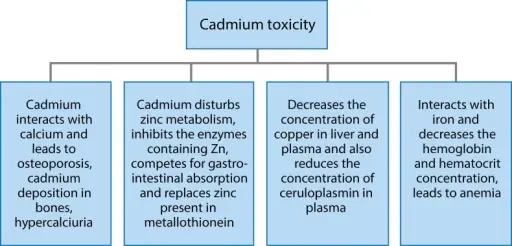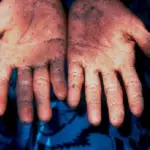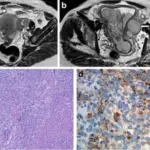Cadmium is a naturally occurring metal. Cadmium toxicity occurs when a person breathes in high levels of cadmium from the air, or eats food or drinks water containing high levels of cadmium.
What is the Pathology of Cadmium Toxicity?
The pathology of cadmium toxicity is:
-Etiology: The cause of cadmium toxicity is that it is toxic to the lungs and kidneys.
-Genes involved: None.
-Pathogenesis: The sequence of events that lead to cadmium toxicity shows cadmium affects cell proliferation, differentiation, and apoptosis. These activities interact with the DNA repair mechanism, the generation of reactive oxygen species, and the induction of apoptosis
-Morphology: The morphology associated with cadmium toxicity shows depletion of reduced glutathione (GSH), binds sulfhydryl groups with protein, and causes enhance the production of reactive oxygen species such as superoxide ion, hydrogen peroxide, and hydroxyl radicals.
-Histology: The histology associated with cadmium toxicity shows membrane disturbances in the central nervous system.
How does Cadmium Toxicity Present?
Patients with cadmium toxicity typically affect males and females present at the age range of 20-45. The symptoms, features, and clinical findings associated with cadmium toxicity include flu-like symptoms, such as body aches, chills, weakness, vomiting, diarrhea, abdominal pain, shortness of breath, swelling of the nose, pharynx, and larynx—with chronic inhalation.
How is Cadmium Toxicity Diagnosed?
Cadmium toxicity is diagnosed using blood tests, urine tests, and air or nail analysis.
How is Cadmium Toxicity Treated?
Cadmium toxicity is treated with gastrointestinal tract irrigation, supportive care, and chemical decontamination traditional-based chelation therapy with appropriate chelating agents and nanoparticle-based antidotes.
What is the Prognosis of Cadmium Toxicity?
The prognosis of cadmium toxicity is good with completely reversible symptoms.



